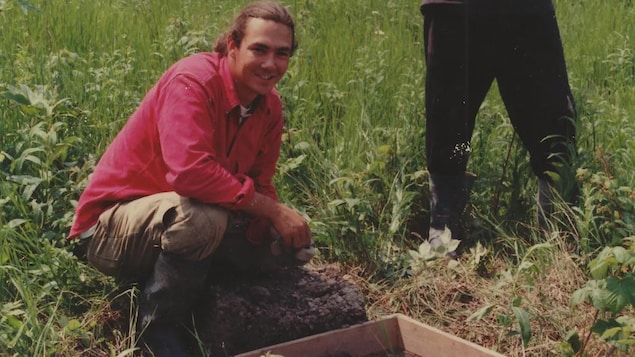An adopted child, he did not have much contact with his culture, he who also has Scottish descendants.
He was raised in Winnipeg by a non-Aboriginal family.
My adoptive parents always let me know that I was adopted and that my father was a Cree from northern Manitoba. In the early 70’s northern Manitoba was everything north of Winnipeg so I had no idea where my homeland was
explains Kevin Brownlee, who was later able to find his biological father in the First Nation of norway house.
At the age of seven, he had his first contact with his culture, when he was invited to a sun dance. As he got older, he became more imbued with it.
An uncle showed me how to make stone tools and how to tan hides. All of this fascinated me.
Manitoba Museum curator says archeology has been this tangible connection with the Aboriginal heritage, but at the same time, it was this kind of door that opened to bring me into the communities.
Indigenous archaeologist, a cold response from his peers
Kevin Brownlee began his career as an archaeologist in 1993 as a summer student. He was often the only Aboriginal in his work teams.
Archeology occupies a very sensitive position within Indigenous communities, and it is not a field that Indigenous people tend to enter
he said
Native people have already called him traitor
for his choice of career, while archeology this is what was done to us [le passé colonial] and it is not processed by us
.
The idea that an Indigenous perspective is left out in archeology is not new.
Archaeologist Eldon Yellowhorn, originally from the Piikani First Nation in Alberta, created a new form of archeology to address this problem, called internalized archaeology.
In 2006, M.Yellowhorn published a book describing his archaeological approach.
It not only examines the artifacts collected, it also incorporates the oral history of the communities studied.
According to Kevin Brownlee, many Aboriginal people are getting into archeology more than ever. They question practices, he says.
This is a very interesting time for the discipline, as communities increasingly assert their rights over heritage
he points out.
For Mr. Brownlee, archeology is not just the study of the past. It also aims to create space for traditional practices to be passed on to the next generation.
I am interested in aboriginal heritage. From my point of view, it doesn’t matter if it’s a set of moccasins made by an aunt, a 5000 year old spearhead or a piece of contemporary Aboriginal art. It is an unbroken link between who we are and the expression of ourselves.
Participation in research on the sites of former residential schools for Aboriginals
Since the discovery of more than 200 unmarked graves at the Kamloops residential school site in May 2021, Indigenous archaeologists have been called upon to assist in excavations at other residential school sites.
According to Mr. Brownlee, the transmission of oral histories will help to target research sites.
Several decades ago, I remember meeting elders who said to me, “I saw how people were buried at the Portage la Prairie residential school. I could see out the window where they were buried”
he says.
There are 18 former Indian residential schools in Manitoba. Research is underway or planned on these sites.
Earlier this month, the province announced $2.5 million to help research will be awarded to Indigenous-led teams.
With information from Stephanie Cram
Reference-ici.radio-canada.ca
